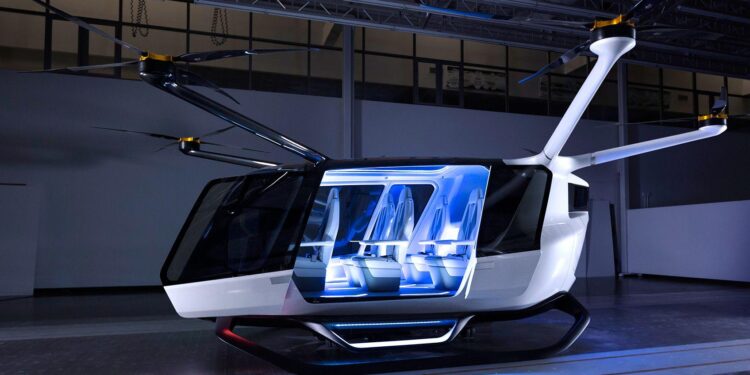As the sun sets over the Texas Hill Country, Austin finds itself on the brink of a technological evolution that could transform its skyline and redefine urban mobility. City leaders have embarked on a new frontier, initiating conversations about integrating air taxi technology into the everyday lives of Austinites. This latest step hints at a future where the hum of electric vertical takeoff and landing vehicles (eVTOLs) might soon blend with the city’s vibrant rhythm, promising to reshape how residents and visitors navigate the bustling capital. In this article, we explore the early dialogues spearheaded by Austin’s decision-makers as they chart a course toward embracing the skies.
Emerging Opportunities in Austin’s Air Taxi Revolution
Austin is rapidly positioning itself at the forefront of urban air mobility, where cutting-edge air taxi technology promises to transform how residents and visitors navigate the city’s expanding skyline. City officials, industry innovators, and transportation experts are collaborating to create a regulatory framework that not only encourages innovation but also prioritizes safety, environmental sustainability, and accessibility. This proactive approach highlights Austin’s commitment to becoming a hub for pioneering transit solutions, fostering new economic growth, and reducing congestion on traditional roadways.
Key drivers shaping this revolution include:
- Advanced electric vertical takeoff and landing (eVTOL) vehicles designed for efficiency and low noise pollution
- Integration with existing public transport to offer seamless multi-modal travel experiences
- Strategic partnerships between tech startups, aerospace leaders, and local government
- Community engagement initiatives ensuring equitable access and addressing residents’ concerns
These dynamic elements are expected to unlock fresh economic opportunities including jobs in manufacturing, software development, and operational management-establishing Austin as a catalyst for a new era in urban transportation.
| Opportunity | Impact | Timeline |
|---|---|---|
| eVTOL Manufacturing | Local job creation & tech innovation | 2024-2026 |
| Infrastructure Development | Vertiport construction & urban integration | 2025-2027 |
| Regulations & Policy Making | Safety standards & operational guidelines | 2024-2025 |
| Public Awareness Programs | Community acceptance & user adoption | 2024-2026 |
Understanding the Infrastructure Challenges for Urban Air Mobility
Implementing urban air mobility (UAM) requires overcoming significant infrastructure hurdles that extend beyond just the technology of air taxis themselves. One of the primary challenges lies in developing vertiports-dedicated takeoff and landing sites integrated seamlessly within the urban landscape. These hubs must be strategically situated near transit centers, workplaces, and densely populated neighborhoods to ensure accessibility while minimizing noise, safety concerns, and visual clutter. In addition, robust charging or refueling facilities for electric vertical takeoff and landing (eVTOL) vehicles will need to be standardized to maintain operational efficiency and scalability.
Moreover, air traffic management for low-altitude urban corridors calls for a sophisticated network capable of coordinating thousands of flights daily without compromising safety. Achieving this demands collaboration among city planners, aviation authorities, and technology providers to build an interconnected ecosystem. Critical factors include:
- Advanced communication systems for real-time vehicle tracking
- Noise abatement protocols tailored for urban environments
- Emergency response frameworks to handle unexpected incidents
- Integration with existing transportation infrastructure to enable smooth multimodal travel
| Infrastructure Component | Key Considerations | Potential Solutions |
|---|---|---|
| Vertiports | Location, size, safety | Multi-level platforms, noise barriers |
| Electric Charging | Power supply, scalability | Standardized plugs, renewable energy sources |
| Air Traffic Control | Coordination, automation | AI-driven flight management systems |
Strategic Recommendations for Integrating Air Taxi Services into City Planning
To effectively weave air taxi services into the urban fabric, city planners must prioritize comprehensive frameworks that balance innovation with community impact. This involves fostering collaborative partnerships between municipal agencies, technology developers, and transportation authorities to establish clear regulatory pathways and safety standards. Equipping zoning laws to accommodate vertical takeoff and landing (VTOL) hubs without disrupting existing urban dynamics is crucial, ensuring strategic placement near transit centers and employment hubs to maximize accessibility and convenience.
Moreover, embracing a layered approach to infrastructure development will accelerate integration. Key considerations include:
- Urban airspace management: Designing controlled corridors that reduce aerial congestion and limit noise pollution.
- Environmental sustainability: Incorporating green energy solutions to power air taxis and ground facilities.
- Public acceptance: Promoting community engagement programs to address concerns and build trust.
| Focus Area | Strategic Action | Expected Outcome |
|---|---|---|
| Infrastructure | Create multi-modal VTOL hubs | Seamless passenger transitions |
| Regulation | Develop safety protocols & airspace rules | Enhanced operational reliability |
| Community | Host engagement forums & pilot programs | Increased public support |
| Technology | Incorporate real-time tracking & AI traffic control | Optimized route efficiency |
To Wrap It Up
As Austin’s skyline continues to evolve, the city stands at the threshold of a new era in transportation. The conversations sparked by local leaders about air taxi technology signal more than just innovation-they hint at a future where the boundaries of urban mobility are redefined. While challenges remain, Austin’s willingness to explore this ‘new frontier’ reflects its enduring spirit of progress and adaptability. As these discussions take flight, residents and visitors alike may soon witness the dawn of a transportation revolution, reshaping the way we move through the city and beyond.































